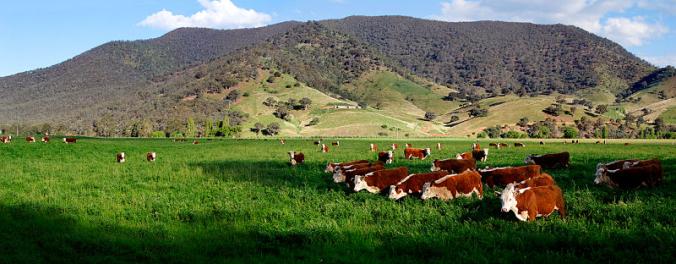Farm control and ownership has traditionally been a key indicator of status and power, especially in Medieval European agrarian societies. The distribution of farm ownership has historically been closely linked to form of government. Medieval feudalism was essentially a system that centralized control of farmland, control of farm labor and political power, while the early American democracy, in which land ownership was a prerequisite for voting rights, was built on relatively easy paths to individual farm ownership. However, the gradual modernization and mechanization of farming, which greatly increases both the efficiency and capital requirements of farming, has led to increasingly large farms. This has usually been accompanied by the decoupling of political power from farm ownership. Forms of ownership In some societies (especially socialist and communist), collective farming is the norm, with either government ownership of the land or common ownership by a local group. Especially in societies without widespread industrialized farming, tenant farming and sharecropping are common; farmers either pay landowners for the right to use farmland or give up a portion of the crops. Farms around the world Australia Farming is a significant economic sector in Australia. A farm is an area of land used for primary production which will include buildings. Where most of the income is from some other employment, and the farm is really an expanded residence, the term hobby farm is common. This will allow sufficient size for recreational use but be very unlikely to produce sufficient income to be self-sustaining. Hobby farms are commonly around 5 acres (20,000 m2) but may be much larger depending upon land prices (which vary regionally). Often very small farms used for intensive primary production are referred to by the specialization they are being used for, such as a dairy rather than a dairy farm, a piggery, a market garden, etc. This also applies to feedlots, which are specifically developed to a single purpose and are often not able to be used for more general purpose (mixed) farming practices. In remote areas farms can become quite large. As with estates in England, there is no defined size or method of operation at which a large farm becomes a station. United Kingdom In the UK, farm as an agricultural unit, always denotes the area of pasture and other fields together with its farmhouse, farmyard and outbuildings. Very large farms, or groups of farms under the same ownership, may be called an estate. Conversely, a small farm surrounding the owner's dwelling is called a smallholding and is generally focused on self-sufficiency with only the surplus being sold. North America Farming near Klingerstown, Pennsylvania Many farms have fallen into disrepair such as the ruins of Higher Hempshaw's in Anglezarke, England Traditional Dutch farmhouse The land and buildings of a farm are called the "farmstead."[citation needed] Enterprises where livestock are raised on rangeland are called ranches. Where livestock are raised in confinement on feed produced elsewhere, the term feedlot is usually used. In 1910 there were 6,406,000 farms and 10,174,000 family workers; In 2000 there were only 2,172,000 farms and 2,062,300 family workers.[10] The share of U.S. farms operated by women has risen steadily over recent decades, from 5 percent in 1978 to 14 percent by 2007.[11] In the United States, there are over three million migrant and seasonal farmworkers; 72% are foreign-born, 78% are male, they have an average age of 36 and average education of 8 years.[12] Farmworkers make an average hourly rate of $9–10 per hour, compared to an average of over $18 per hour for nonfarm labor. Their average family income is under $20,000 and 23% live in families with incomes below the federal poverty level.[13] One-half of all farmworker families earn less than $10,000 per year,[14] which is significantly below the 2005 U.S. poverty level of $19,874 for a family of four. In 2007, corn acres are expected to increase by 15% because of the high demand for ethanol, both in and outside of the U.S. Producers are expecting to plant 90.5 million acres (366,000 km²) of corn, making it the largest corn crop since 1944.


